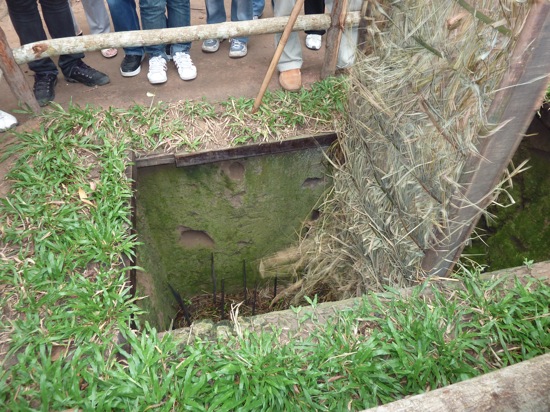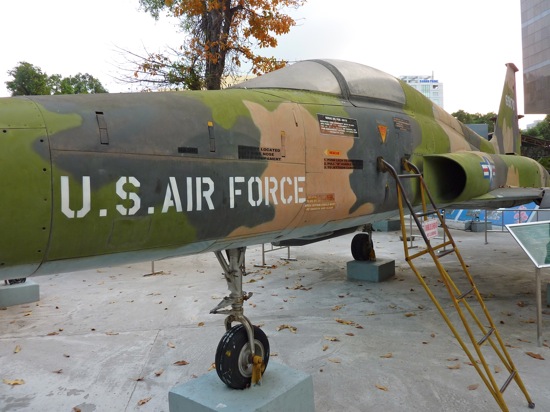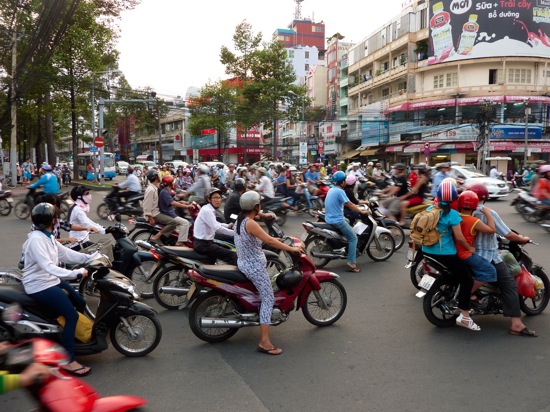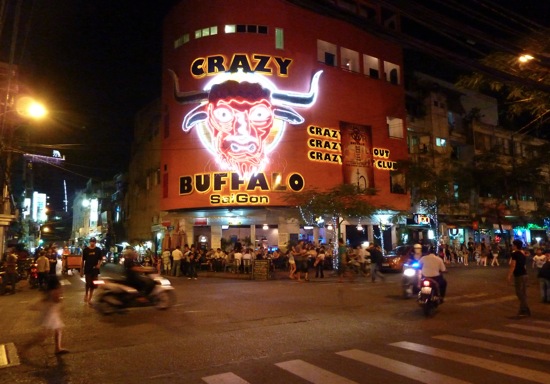- 20 . 03 . 11
A visit to Viet Cong tunnels and a distressing but important exhibition on the effects of war make for a difficult but interesting day.
- StumbleUpon
- TwitterTweet
- Facebook
-
Flickr
What Is It Good For?
The photograph of the distressed naked young girl running towards the camera after a napalm attack is one of the most iconic moments captured on film during the Vietnam War. Though terrible, it is nowhere near the most disturbing image at the War Remnants Museum in Ho Chi Minh City. The photographs there, simply mounted and without embellishment, depict brutality and a disregard for life so callous that it borders on unbelievable.
The atmosphere in the museum was subdued and sombre as smiles and laughs on the first floor at some of the propaganda exhibits gave way to the shocking imagery on the second and third floors. After Effects Of Agent Orange showed how the defoliant dropped in large quantities over forests and rivers during the latter stages of the way are still causing significant and heart-breaking birth defects today. The chemical’s special sauce, dioxin, remains one of the most poisonous compounds ever created by man, with a mere 85 grams enough to kill every living thing in a small city.
While clearly depicting only American atrocities and skipping those that must have been inflicted by the Viet Cong (History is written by the winners after all), the exhibit is perhaps all the more shocking because a lot of the first-hand accounts came from Americans themselves. In particular, the photographic records from Larry … and Robert Capa give an insight into the chaos and misery inflicted not just on the country, but on the US soldiers who were asked to prosecute the war. A series of photographs of a single US soldier chart his transition from smiling braggadocio to abject despair after a particularly harrowing mission.
The museum visit followed a morning trip to Cu Chi Tunnels, a vast network of underground passages up to 9m below ground. Initially created during the resistance to the French colonists, they were significantly expanded during the American War to around 200km in length stretching all the way from Saigon to the Cambodian border (latter day Kampuchea).
Our guide was a happy guy, full of witticisms and with a laugh like the Count from Sesame Street. His Vietnamese name sounded a bit like Two One, but he predicted that we’d all forget that, suggesting instead that we just call him John Wayne. It was a self-fulfilling prophecy. Who could remember a foreign name when offered the option of Marion Morrison’s pseudonym?
The tunnels actually remain in their original state in a number of places and I had the opportunity to scramble about 100m through them before returning to the surface. It was more than enough. Even with the benefit of small electric lamps, the atmosphere was cloying, claustrophobic and oppressively hot. Despite this, they are brilliantly engineered, with separate tunnels to collect surface run-off after the rain and deliver it to the river, hidden trapdoors that you can’t even feel when you’re standing on them and large underground rooms for cooking, dining and the manufacture of munitions.
During the war US soldiers were expected to go down into the darkness, crawling through passages between 1.5m and 0.8m high and kill any resistance fighters they found. With larger frames than their enemies, no knowledge of the tunnel layout or direction and no light whatsoever, it’s not surprising that these Tunnel Rats proportionally suffered among the highest number of casualties in the war.
The park grounds today include a firing range where tourists are able to pick from a variety of weapons and fire off a few rounds at targets. The report of guns going off in the distance while walking through the jungle give a shallow understanding of what patrols through here must have been like.
I pity the US soldiers asked to carry out their (notably distant) Supreme Commanders’ orders. Between the imposing jungle, the abundance of ingenious and cruel booby traps designed to maim rather than kill, land mines and Viet Cong popping up from peepholes to take potshots, it’s not hard to imagine the sheer terror they must have felt.
The tour finished with a typically hyperbolic Vietnamese propaganda film from the period, decrying the Americans as behaving “like bunch of crazy devils” who “ruthlessly dropped bombs on these kind and gentle people, thousands of miles from the USA”.
Vietnam has of course resumed full diplomatic relations with the USA. Individually, I have heard a number of Vietnamese say that they prefer to concentrate on the future instead of dwelling on the past. I can’t speak for what children are taught in school, but outside of Hoa Lo Prison and today’ two destinations, there aren’t many references to the conflict. The occasional historical propaganda film aside (which the Communist Party probably considers an important part of its history), there is no negativity. Though there is clearly a determination to state that these event were not asked for, bitterness is not apparent. Instead, these places stand to serve as a important reminder of the horrors of war, lest we forget.





Leave a Reply